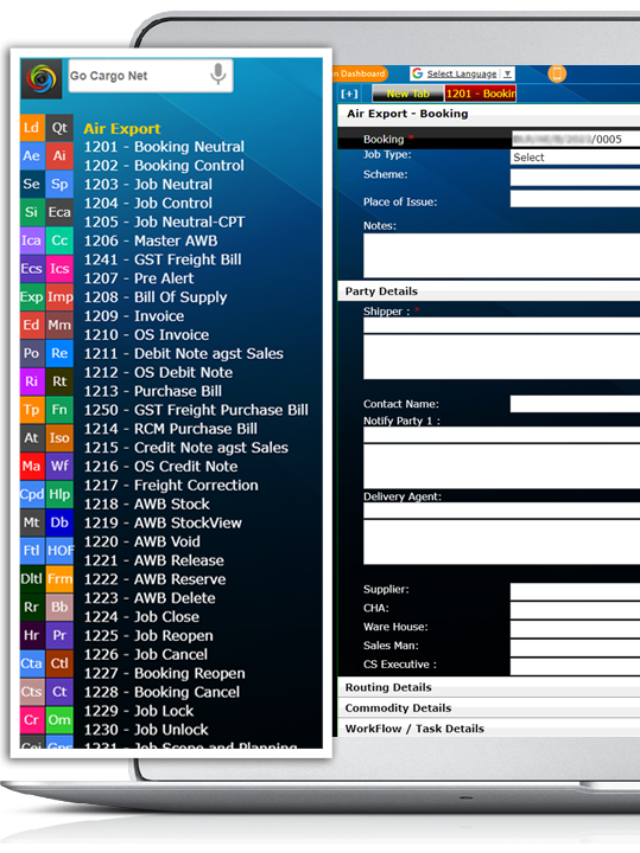Mastering Freight Documentation Management with CargoNet: Streamline Your Logistics Processes
In the intricate world of logistics, efficient freight documentation management is critical to ensuring smooth operations and compliance with regulations. Mismanagement can lead to costly errors, shipment delays, and compliance issues. CargoNet—a comprehensive freight software solution designed to simplify and enhance your documentation management processes. In this blog, we’ll explore how CargoNet can transform your freight documentation management and provide practical tips for optimizing your approach.
What is Freight Documentation Management?
Freight documentation management involves the systematic creation, handling, and storage of all necessary documents required for the transportation of goods. These documents facilitate regulatory compliance, customs clearance, and accurate tracking and billing. Key documents include:
- Bill of Lading (BOL): A legal document between the shipper and carrier outlining the type, quantity, and destination of the goods.
- Commercial Invoice: Issued by the seller, this document details the goods sold and the amount due.
- Packing List: A detailed list of the shipment contents, aiding customs clearance and inventory management.
- Certificate of Origin: Certifies the country of manufacture for the goods.
- Import/Export Licenses: Permits required for the legal import or export of goods.
Why Efficient Freight Documentation Management Matters
Effective freight documentation management with CargoNet offers several critical benefits:
- Regulatory Compliance: Ensures adherence to international trade regulations, reducing risks of fines and delays.ocument between the shipper and carrier outlining the type, quantity, and destination of the goods.
- Accuracy: Minimizes errors that can lead to shipment delays, lost goods, and billing discrepancies.
- Efficiency: Saves time and resources, allowing your team to focus on strategic tasks.
- Visibility: Provides greater insight into your supply chain, enabling better decision-making and tracking.
- Customer Satisfaction: Ensures timely and accurate documentation for on-time deliveries and transparent communication.
How CargoNet Enhances Freight Documentation Management
CargoNet is designed to simplify and optimize your freight documentation processes through advanced features:
1. Automated Document Generation: CargoNet automates the creation of key documents such as Bills of Lading, commercial invoices, and packing lists. By leveraging predefined templates and data inputs, the software ensures accuracy and consistency, reducing manual effort and the risk of errors.
2. Centralized Document Storage: With CargoNet, all your freight documents are securely stored in a centralized, cloud-based repository. This ensures easy access, enhanced security, and simplified document retrieval, whether you’re in the office or on the go.
3. Real-time Data Access: CargoNet provides real-time access to your documents, allowing you to update and share information instantly. This feature is crucial for maintaining up-to-date records and facilitating seamless collaboration among your team and partners.
4. Compliance Management: Staying compliant with international trade regulations is simplified with CargoNet. The software is regularly updated to reflect the latest regulatory changes, ensuring your documents always meet current standards and avoiding costly compliance issues.
5.Integration Capabilities: CargoNet seamlessly integrates with other systems, such as ERP and CRM platforms, creating a cohesive workflow. This integration ensures that all relevant data is synchronized, further reducing the risk of errors and improving overall efficiency.
Tips for Optimizing Your Freight Documentation Management
1. Leverage Automation: Utilize CargoNet’s automated features to streamline document creation and management.
2. Standardize Processes: Establish clear guidelines and templates for document creation and management. Standardizing your processes ensures consistency and accuracy across all documents.
3. Transition to Digital: CargoNet seamlessly integrates with other systems, such as ERP and CRM platforms, creating a cohesive workflow. This integration ensures that all relevant data is synchronized, further reducing the risk of errors and improving overall efficiency.
4. Regular Training: Ensure your team is well-trained in using CargoNet and understands the importance of accurate and compliant documentation. Regular training sessions can keep your team updated on the latest features and best practices.
5. Continuous Improvement: Regularly review and update your documentation processes to ensure they remain efficient and compliant. CargoNet’s real-time data and reporting capabilities can help identify areas for improvement.
Conclusion :-
Efficient freight documentation management is vital for smooth logistics operations and regulatory compliance. CargoNet offers a comprehensive solution to streamline your documentation processes, improve accuracy, and enhance overall efficiency. By leveraging CargoNet’s advanced features and following best practices, you can transform your freight documentation management, ensuring your logistics operations run smoothly and effectively. Invest in CargoNet today to experience the benefits of streamlined freight documentation management, improved compliance, and enhanced operational efficiency. Your logistics operations will become more organized, efficient, and capable of meeting the demands of today’s fast-paced industry.








